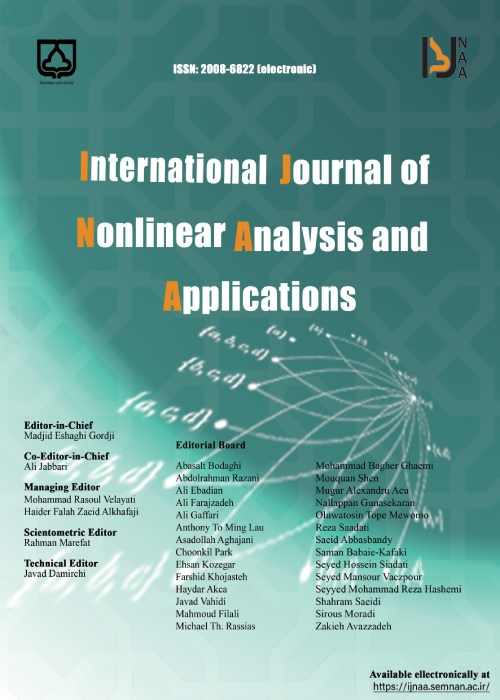Designing a Hybrid Model of Data Envelopment Analysis with Taguchi Approach to Optimize Multiple Response Banks Performance
Author(s):
Article Type:
Research/Original Article (دارای رتبه معتبر)
Abstract:
Many organizations (including banks) have a multi-step process and their operations are a continuous process in successive periods. The Taguchi method is an efficient way to optimize a single quality response. However, in practice most products / processes have more than one qualitative response. Recently, the multi-answer question in the Taguchi method has attracted considerable research attention. Therefore, this study presents an efficient approach to multi-response problem solving in Taguchi method using hybrid data envelopment analysis (DEA) model. Each experiment is discussed in the Taguchi Orthogonal Array (OA) as a decision unit (DMU) with multiple input and / or output response sets. Each DMU is evaluated by a hybrid model. The sequential DUM productivity value is then used to decide the optimal factor levels for the multi-response problem. The computational results showed that the proposed approach provides the most anticipated improvement in PCA, DEA (DEAR) and other available techniques. The suggestion may be of great help to managers in solving multi-response problems in production programs in the Taguchi method. Many organizations (including banks) have a multi-step process and their operations are a continuous process in successive periods. The Taguchi method is an efficient way to optimize a single quality response. However, in practice most products / processes have more than one qualitative response. Recently, the multi-answer question in the Taguchi method has attracted considerable research attention. Therefore, this study presents an efficient approach to multi-response problem solving in Taguchi method using hybrid data envelopment analysis (DEA) model. Each experiment is discussed in the Taguchi Orthogonal Array (OA) as a decision unit (DMU) with multiple input and / or output response sets. Each DMU is evaluated by a hybrid model. The sequential DUM productivity value is then used to decide the optimal factor levels for the multi-response problem. The computational results showed that the proposed approach provides the most anticipated improvement in PCA, DEA (DEAR) and other available techniques. The suggestion may be of great help to managers in solving multi-response problems in production programs in the Taguchi method.
Keywords:
Language:
English
Published:
International Journal Of Nonlinear Analysis And Applications, Volume:11 Issue: 1, Winter-Spring 2020
Pages:
423 to 435
https://magiran.com/p2261677
دانلود و مطالعه متن این مقاله با یکی از روشهای زیر امکان پذیر است:
اشتراک شخصی
با عضویت و پرداخت آنلاین حق اشتراک یکساله به مبلغ 1,390,000ريال میتوانید 70 عنوان مطلب دانلود کنید!
اشتراک سازمانی
به کتابخانه دانشگاه یا محل کار خود پیشنهاد کنید تا اشتراک سازمانی این پایگاه را برای دسترسی نامحدود همه کاربران به متن مطالب تهیه نمایند!
توجه!
- حق عضویت دریافتی صرف حمایت از نشریات عضو و نگهداری، تکمیل و توسعه مگیران میشود.
- پرداخت حق اشتراک و دانلود مقالات اجازه بازنشر آن در سایر رسانههای چاپی و دیجیتال را به کاربر نمیدهد.
In order to view content subscription is required
Personal subscription
Subscribe magiran.com for 70 € euros via PayPal and download 70 articles during a year.
Organization subscription
Please contact us to subscribe your university or library for unlimited access!


